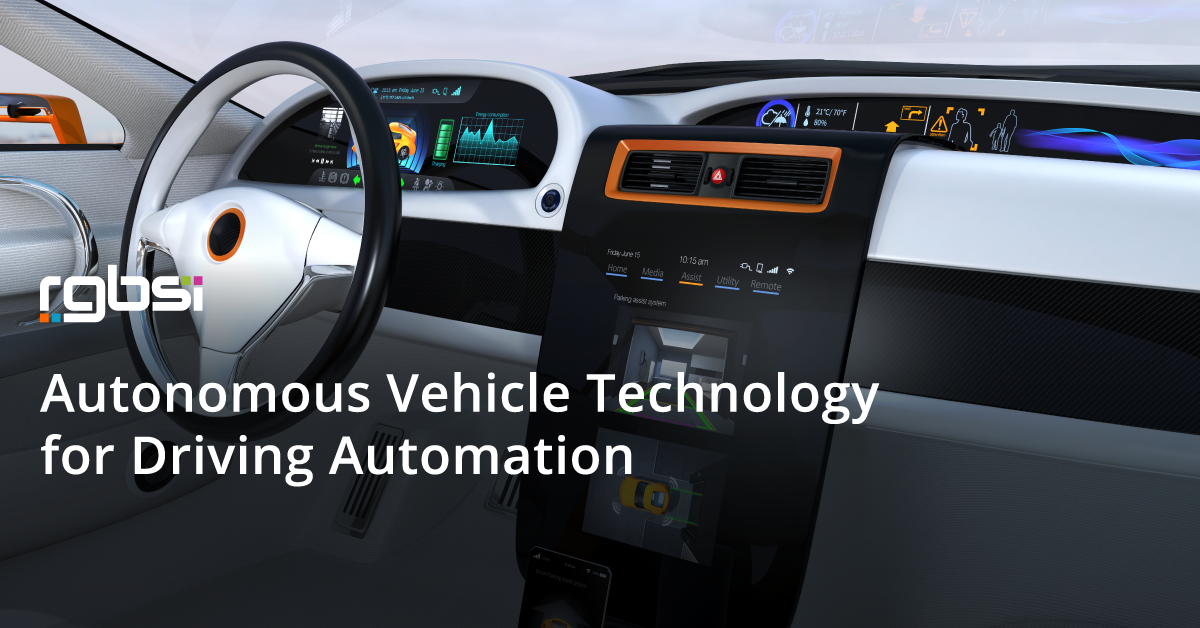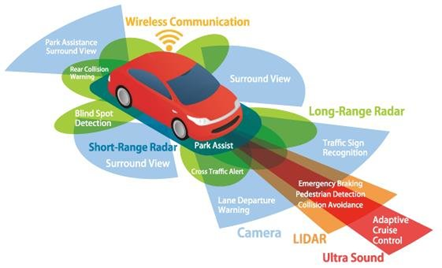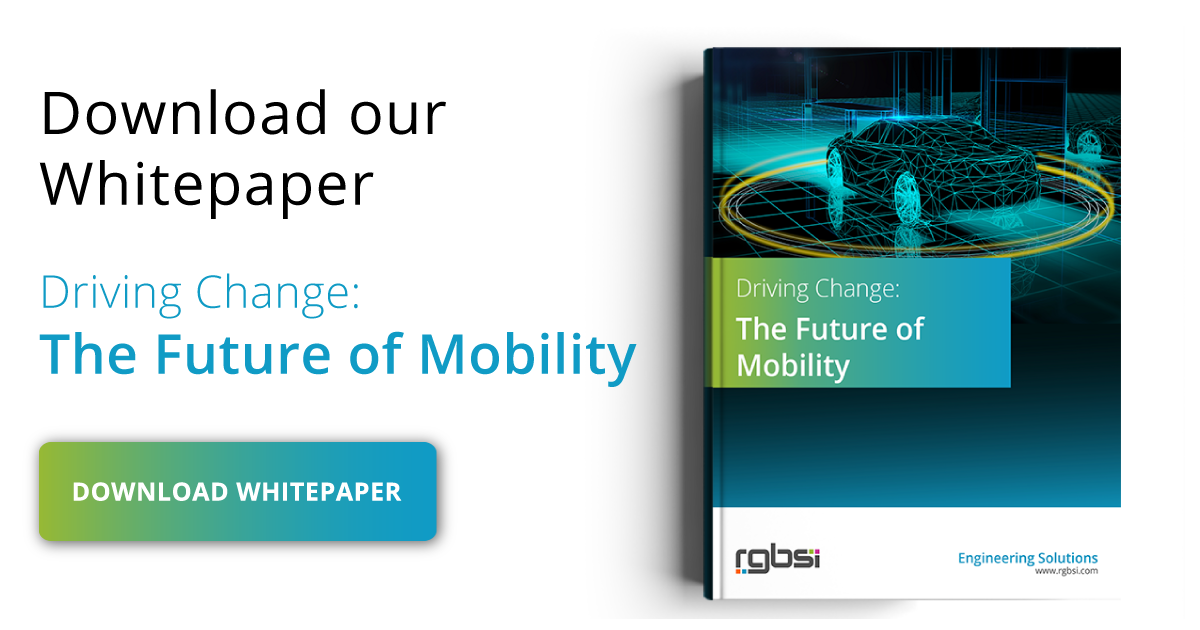
Driving automation could lead to breakthroughs in transportation safety and offer innovative mobility solutions. If the right autonomous vehicle technology is implemented to accurately predict, detect, and respond to movements of all transportation, this would provide the most cutting-edge safety advantage.
Autonomous Vehicle Technology
AVs (autonomous vehicles) use a combination of technologies and sensors to sense the roadway, other vehicles, and objects on and along the roadway
Autonomous vehicle technology enables an autonomous driving system to work in sync to maintain full control over the vehicle and sense exterior objects. Alike humans, autonomous vehicles must have the capacity to rationalize judgements, process sensory information, and make decisions for smart responses to external factors. Autonomous vehicle technology makes this possible.
- LiDAR technology (light detection and ranging) allows autonomous vehicles to make calculated decisions with its ability to detect objects in its immediate environment. It truly enables the power of vision.
- Camera technology that uses complex algorithms to interpret information collected through the system.
- RADAR (radio detection and ranging) technology uses radio waves to determine the distance between object and obstacles.
- Infrared sensor technology detects objects in the dark or other hard to see conditions.
- INS (inertial navigation system) technology works with GPS to improve location accuracy and determine vehicle position, orientation, and velocity.
- DSRC (dedicated short-range communication) technology works with V2I and V2V systems to send and receive information on current road conditions, accidents, traffic volume.
- Prebuilt mapping technology relies on predefined road maps to limit the available routes that can be taken.
- Ultrasonic sensor technology provides information at a short distance to assist with parking and backup warning.
- GPS (global positioning system) technology uses satellites to relay the vehicle’s position information.
Technologies in Autonomous Vehicles

Source: The technologies behind autonomous vehicles
Levels of Driving Automation
The SAE J 3016 standard defines 6 levels of driving automation. Assisted and/or automation technology provide vehicles with feature enhancements that may operate independently, simultaneously, or conditionally.
- Level 0: No Automation indicates that a vehicle does not have any assisted or automated driving technologies
- Level 1: Assisted Driving Automation indicates that a vehicle has one or more assisted driving technologies such as adaptive cruise control and/or parking sensors that don’t work together.
- Level 2: Partial Automation indicates that a vehicle has two or more assisted driving technologies that work together simultaneously.
- Level 3: Conditional Automation indicated that a vehicle has limited automation driving functionality under certain conditions to make certain decisions without human judgement.
- Level 4: High Automation indicates that a vehicle has full automation driving technology functionality under most conditions and select conditions requiring human oversight such as a blizzard or navigating unrouted roads.
- Level 5: Full Automation indicates that a vehicle has full automation technology and require no involvement of humans.
Driving Automation and Safety
Driving automation offers great benefits in safety with the opportunity to reduce traffic-related accidents and save lives by eliminating human errors. According to NPR, 94 percent of major car crashes are due to some type of human error. Autonomous vehicle technology has lifesaving potential for drivers, passengers, pedestrians, and bikers.
Driving Automation and Mobility
With the application of autonomous vehicle technology, driving automation can help support different demographics and communities. This provides opportunity to offer more shared mobility options to those who currently do not have transportation flexibility. For example, this could help senior citizens and those with disabilities that are otherwise limited by the current transportation options available. In countries where the ability to drive determines an individual’s access to employment opportunities and freedom, driving automation opens the doors to greater accessibility.
The Benefits of AVs in Major Cities

Source: Autonomous Vehicles in Sustainable Cities
Autonomous vehicle technology is making driving vehicle automation a possibility. Gearing vehicles with such technology will prevent car accidents, provide more options forth future of mobility, and reduce traffic bottlenecks.
Driving automation continues to evolve with power of AV technology in maximizing its full potential.
About RGBSI
At RGBSI, we deliver total workforce management, engineering, quality lifecycle management, and IT solutions that provide strategic partnership for organizations of all sizes.
Engineering Solutions
As an organization of engineering experts, we understand the importance of modernization. By pairing modern technology with design expertise, we elevate fundamental engineering principles to accommodate growing product complexity requirements. We work with clients to unlock the full potential of their products and enable future innovation. Learn more about our automation and digital engineering services.












